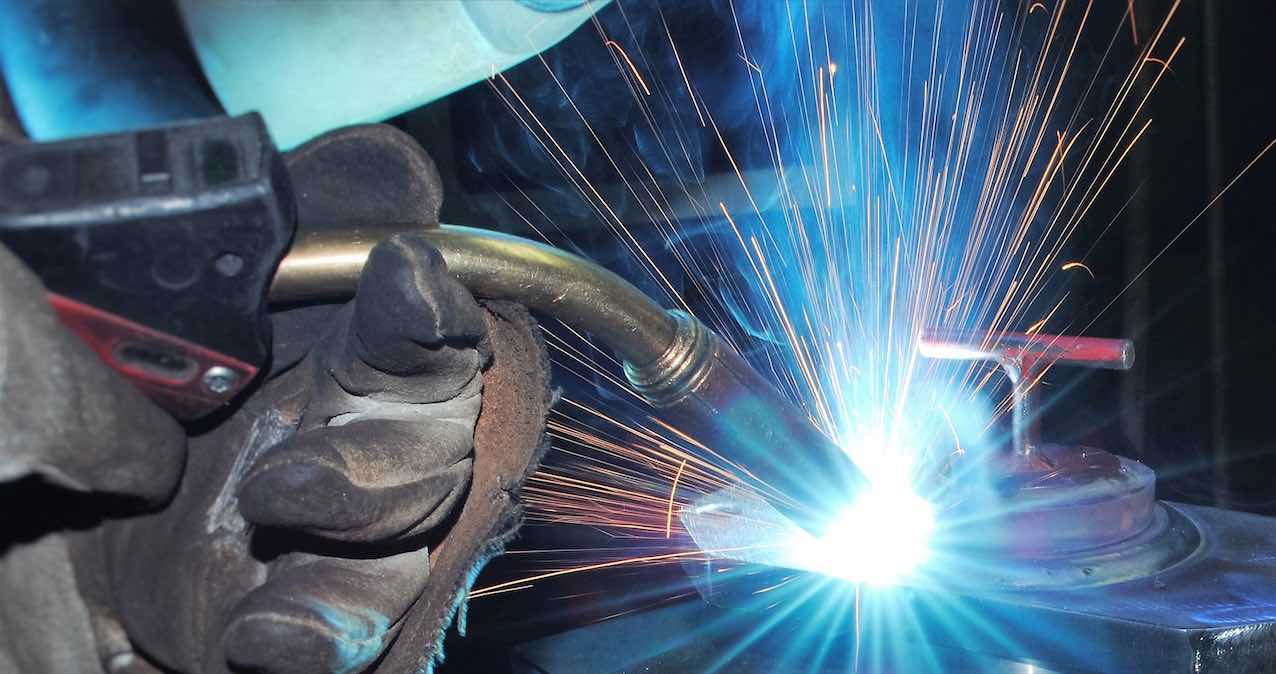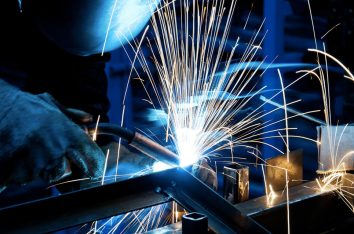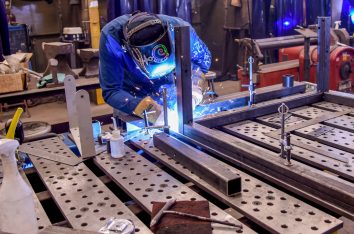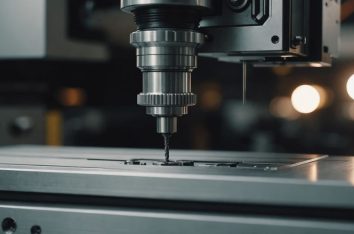Welding is a core production activity that involves joining materials, usually metals or thermoplastics, using high-temperature heat. This process is essential for a variety of applications across multiple industries, including the construction of buildings and infrastructure, vehicles, and equipment. In this article, Ram-Z Fab will explore the fundamentals of welding and the different processes used in various applications.
Definition of Welding
Welding is a fabrication process that joins materials, typically metals, using heat to create friction that subsequently cools and forms a new, solid structure. This method involves applying heat, pressure, or both to melt the material, enabling different components to fuse together. Unlike brazing or soldering, which melt the base materials separately, welding melts them together, creating a bond that is often stronger than the original metals joined through other methods. The process is versatile, with various techniques available to address different needs, whether it’s for structural integrity in construction, precision in manufacturing, or artistic expression. Understanding these processes ensures optimal results tailored to specific applications.
Types of Welding
Different types of welding vary based on the methods and equipment used, each offering specific applications, benefits, and challenges. To provide a clearer understanding, here's an overview of some of the most common welding types, including their processes and typical applications.
1. Shielded Metal Arc Welding
One of the oldest and most popular welding processes, dating back even before World War II, is Shielded Metal Arc Welding (SMAW)), commonly known as Stick Welding. This method uses a consumable electrode coated with flux, which forms the weld. The welding arc generates the necessary heat to melt the electrode and fuse it with the base material. As the arc is struck, the flux coating melts and disintegrates, creating a gas shield that protects the weld area from atmospheric contamination.
Applications: SMAW was once highly popular across various industries due to its portability, making it suitable for construction, repair work, and more. Its versatility and effectiveness extend to welding iron, steel, and other high-carbon metals.
2. Metal Inert Gas (MIG)
MIG (Metal Inert Gas)Welding employs a continuous solid wire electrode fed through the welding gun. The heat from the arc melts the electrode and base materials to form a joint. Gas-shielded MIG welding uses argon or an argon-carbon dioxide mix to protect the weld pool from contamination by the surrounding air.
Uses: MIG welding is widely used in industries such as automotive, manufacturing, and industrial fabrication due to its speed and ease of learning. This technique is particularly well-suited for welding aluminum, stainless steel, and other non-ferrous metals.
3. Gas Tungsten Arc Welding (GTAW / TIG)
Tig (tungsten Inert Gas)welding differs from MIG welding in that the filler material is not fed automatically but must be added manually. TIG welding uses shielding gas, typically argon or helium, to protect the weld area from contamination.
Applications: TIG welding is known for producing superior welds and is commonly used in the aerospace and automotive industries, as well as in creating art pieces. It excels in welding thin materials and is particularly effective for non-ferrous metals such as aluminum, magnesium, and copper alloys.
4. Flux-Cored Arc Welding (FCAW)
This method is similar to MIG welding but uses a special tubular wire filled with flux instead of a solid wire. The flux itself provides the necessary shielding, making this process effective in windy conditions without the need for an external shielding gas.
Applications: The high deposition rate and capability to weld thicker materials make FCAW ideal for construction and heavy equipment repair.
5. Submerged Arc Welding (SAW)
In this process, a continuous feed wire is melted into an arc with the aid of a liquid called flux, which maintains contact with the workpiece throughout. The weld pool is covered by a granular flux layer that protects against contamination and ensures a smooth finish. This method is largely automatic and is commonly used for long, straight welds.
Applications: SAW (Submerged Arc Welding) is extensively used in shipbuilding, pressure vessel fabrication, and the construction of large pipes due to its efficiency as an automatic welding process. It produces deep welds quickly, making it highly effective for these applications.
6. Oxy-Fuel Welding (OFW)
Gas welding, also known as oxy-fuel welding, generates a flame by burning a mixture of oxygen and a fuel gas, commonly acetylene. This flame melts both the base material and a separate metal filler rod. Although this process dates back to before the advent of electricity, forge welding is mainly used today for repair jobs and in situations where electrical welding is not feasible.
Applications: It is widely used for welding thin materials and an art of metal, field repair work.
In conclusion, welding’s definition and its various types highlight its remarkable flexibility, making it applicable across numerous industries. Welding is crucial for construction, infrastructure development, industrial machinery fabrication, and even artistic creation. Understanding the different welding methods helps in selecting the most suitable process for each application, ensuring that welded structures are strong, resilient, and safe.
Welding Processes Breakdown to Pick the Right One
The specific type of welding that will be used is going to largely depend on the materials being joined, the desired strength in welds, an environment where welding may take place and the overall skill level available at hand. For instance:
Electrode Welding is great for very fast and simple welds where speed and performance are valuable.
TIG Welding is more for clean welds or the same fine bead appearance and TIGHTLY connected metals.
Stick welding is often used for outdooring and high-performance applications such as those for outdoor power generation because stick welders are more portable than other types of equipment.
It is used for thick metals and in situations where the shielding gas from GMAW can be problematic.
Welding Safety Precautions
Welding, while crucial, poses inherent dangers including high temperatures, UV exposure, and toxic fumes. To ensure safety, welders should wear protective clothing such as helmets with screens, gloves, and aprons. Adequate ventilation is also essential to prevent the inhalation of harmful fumes and gases.
Conclusion
In the modern age, welding plays a crucial role in manufacturing and construction, offering various types of welding processes each with specific benefits for different applications. Understanding what welding entails and the different types available can help in selecting the most suitable process for specific tasks, ensuring strong, high-quality, and durable results. Whether it's for building infrastructure, fabricating vehicles, or creating intricate artwork, welding remains a fundamental process in fabrication and assembly across numerous industries.
Recent Posts
- Where to Find High-Quality Fabrication and Welding in Oregon
- Where to Find High-Quality CNC Machining in Oregon
- CNC Machining Services by Ram-Z Fab: Precision and Innovation in Willamette Valley
- CNC Machining in the Automation Industry: Precision Engineering for the Future
- CNC Machining in the Food Production Industry: Precision for Palates




